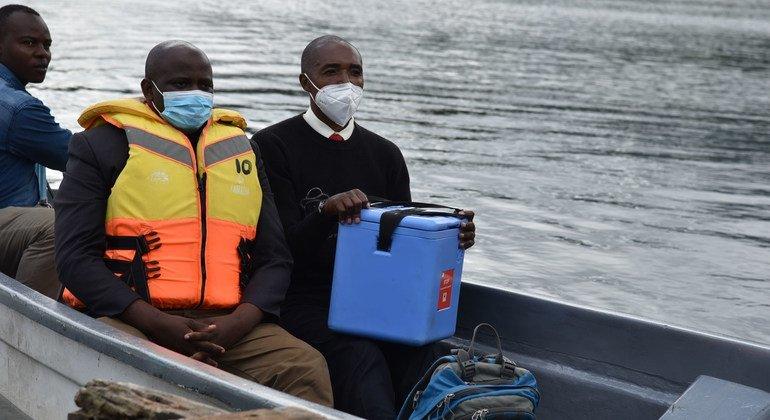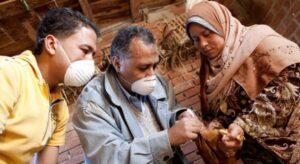Dr. Ibrahim Abubakar, professor of infectious diseases at the University College of London, published this warning at a recent meeting of the United Nations Economic and Social Council (ECOSOC) in New York.
It is not a question of knowing if, and when, and Dr Abubakar thinks that the answer is earlier than anyone who wants it partly because the global health system remains radically compartmentalized.
This is a problem because, intrinsically, a pandemic cannot be stopped by a single country.
“Infectious diseases will not respect borders.
On the contrary, to stop pandemics – and promote larger global development – requires robust partnerships and coherent investments in multilateral systems as a practice, not only as ideal.
“If we want to respect the ambitions of the 2030 agenda, we must reinvent cooperation, not as a transactional action but as a dynamic, inclusive and ready for future partnership,” said Lok Bahadur Thapa, vice-president of Ecosoc.
A goal to unite all goals
The high -level political forum (HLPF) on sustainable development is revealed at the UN headquarters in New York to discuss progress – or its absence – to the 17 sustainable development objectives contained on a global scale (SDG).
The first 16 SDGs deal with specific development aspects – such as poverty, gender equality and climate change – but the 17 highlights to reach others. And this path lies in the adoption of global partnerships between state governments, civil society organizations, communities and the private sector.
However, with an annual financing difference for the SDGs which exceeds 4 billions of dollars, today’s partnerships are not sufficient to achieve the objectives of tomorrow.
“We must forge truly transformative partnerships that break traditional silos: governments, civil society, the private sector and multilateral institutions all have roles to play in an inclusive coalition for sustainable development,” said Dima Al-Khatib, director of the UN Office for South-South Cooperation (UNOSC) during an HLPF event.
Prioritize prevention, not the reaction
Currently, the current health system, which includes pandemic preparation, is oriented towards emergencies on health once they emerge rather than prevent them proactively, according to Dr Abubakar.
Member States have recently adopted a pandemic prevention treaty which strives to do this – limit the probability of future pandemics.
But for many, this accent placed on prevention extends beyond pandemics to questions such as rehabilitation and primary care services, the two experts say they are critical investments not only in human well-being but also in peace and security.
In addition, these types of preventive medicine are cheaper than reactive medicine, according to Mandeep Dhaliwal, director of health at the United Nations Development Program (UNDP).
“It is important to invest in prevention as much as in treatment, and it is more profitable because … you turn off the tap,” said Dhaliwal.
However, convincing investors to support preventive care can be difficult because, when it is done correctly, tangible results are not necessarily visible.
Health is in each system
However, investing in preventive medicine such as primary care and socio -economic determinants of health – such as climate and nutrition – can help guarantee that health systems holistically support people before the start of a crisis.
“Health is not a silo … The factors that influence health are often outside the health sector,” said Dhaliwal, citing the example of air pollution which is a climate problem that intrinsically influences health.
This type of holistic investment requires robust partnerships that work to ensure that each initiative – regardless of the apparently distant way – considers health implications.
“We have too often treated [health] As a downstream problem, something that only improves if other systems work. But we now understand that health and well-being are not just the result of good developments. This is the starting point, ”said Tony Ott, professor of agricultural sciences at the Pennsylvania State University.
The low health system link
Migrants and displaced people tend to be among the least likely to have access to preventive medicine and often to those most affected by the social determinants of health.
“Migration and displacement, whether motivated by conflicts, climate change or economic factors, define factors in terms of health,” he said.
At the end of 2024, 123.2 million people were moved around the world, a number of decades which proves that during the 10 years which followed the adoption of SDGs, the world regressed in relation to travel.
For Dr. Abubakar, these displaced people – and millions of other volunteer migrants – embody why the health system simply cannot continue to silos and should rather adopt cross -border partnerships.
“Health systems must guarantee access to essential services, regardless of immigration status … Any community without access is this weak link which can mean that we are not all protected,” said Dr. Abubakar, referring to the following pandemic.
Center communities
The idea of partnerships and fundamental to reaching SDGs is logical for many people. After all, the objectives are universal in nature and require global collaboration.
But this collaboration, in particular for health, must do more than simply engaging experts – it must engage people who are looking for health care. Dr. Abubakar said that all health policies must be culturally adapted to local contexts, which can only occur if communities are placed at the health care center.
“The new future that I see would adopt the global partnership, including countries regardless of the level of income, the public and private sector, the academic and civil society. And in this context, communities must be at the center … not only as a recipient but as co-creators of solutions. ”




